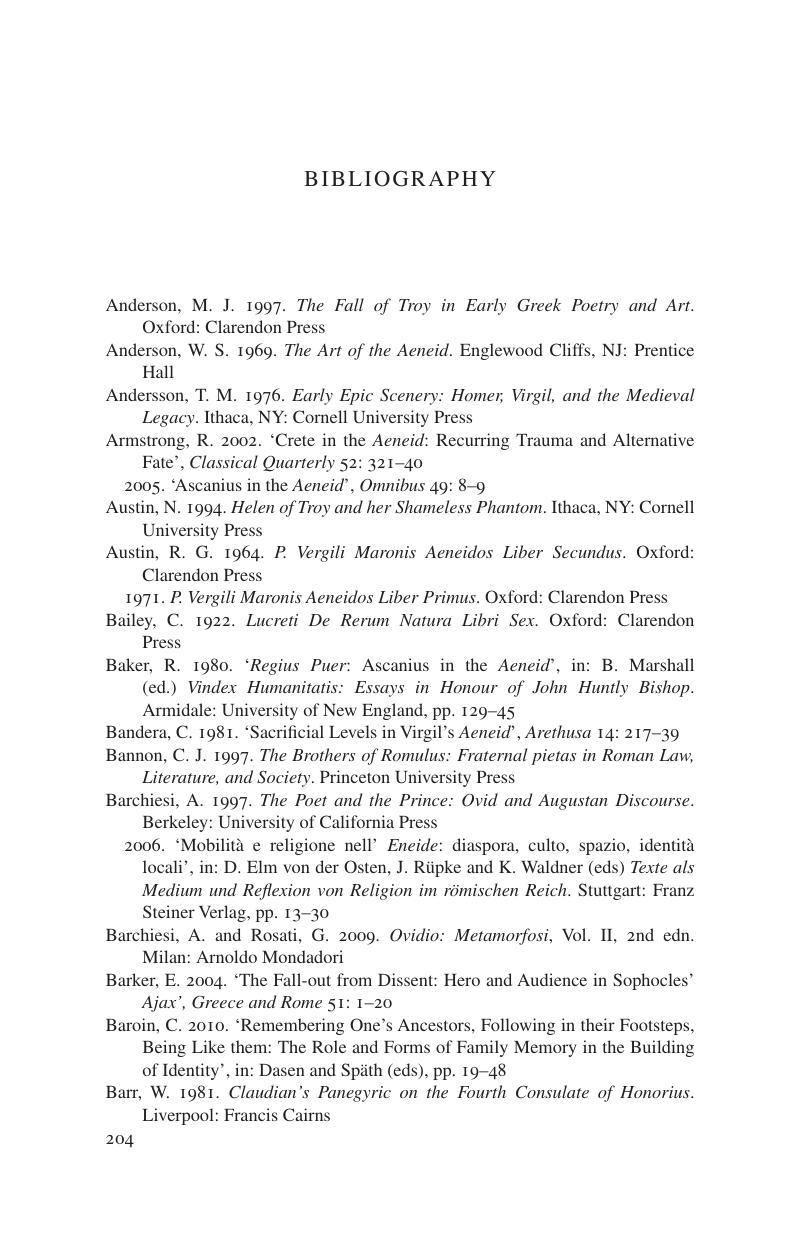Book contents
- Virgil’s Ascanius
- Cambridge Classical Studies
- Virgil’s Ascanius
- Copyright page
- Contents
- Preface and Acknowledgments
- Abbreviations
- Chapter 1 Introduction
- Chapter 2 The Heir and the Spare
- Chapter 3 Old Names and New
- Chapter 4 Andromache and Dido
- Chapter 5 Trojan Games
- Chapter 6 Trojan Fire
- Chapter 7 Protecting Ascanius
- Chapter 8 Growing Up
- Chapter 9 Relegating Ascanius
- Chapter 10 Conclusion
- Bibliography
- General Index
- Index Locorum
- References
Bibliography
Published online by Cambridge University Press: 02 March 2017
- Virgil’s Ascanius
- Cambridge Classical Studies
- Virgil’s Ascanius
- Copyright page
- Contents
- Preface and Acknowledgments
- Abbreviations
- Chapter 1 Introduction
- Chapter 2 The Heir and the Spare
- Chapter 3 Old Names and New
- Chapter 4 Andromache and Dido
- Chapter 5 Trojan Games
- Chapter 6 Trojan Fire
- Chapter 7 Protecting Ascanius
- Chapter 8 Growing Up
- Chapter 9 Relegating Ascanius
- Chapter 10 Conclusion
- Bibliography
- General Index
- Index Locorum
- References
Summary

- Type
- Chapter
- Information
- Virgil's AscaniusImagining the Future in the <I>Aeneid</I>, pp. 204 - 224Publisher: Cambridge University PressPrint publication year: 2017

